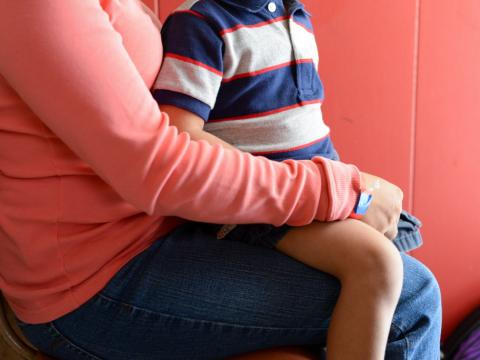The unaccompanied children: World Vision El Salvador responds with a unique initiative

By Victor Martinez, Regional Communications Officer
According to a recent study of the Pew Research Center, the US boarder officers detained almost 13,000 unaccompanied children in the first five months of 2015. This represent 9,000 boys and girls less than the same period in 2014.
Migration flow has not dropped down, Mexican authorities only increased immigration enforcement after the strong media and political coverage during last summer. From January to May of this year, Mexico have deported 56% more children than the same months last year, according to Pew. Most of them are from Guatemala, El Salvador and Honduras.
While the number of returned boys and girls increase in Central America, World Vision El Salvador (WVES) has been working with government agencies to remodel the Center of the Integral Care of Migrants, the main facility where children arrive after their attempt to cross the border.
“Working closely with the authorities, has allowed us to identify that the reception and monitoring protocols are not as effective as they should be. It is necessary the design of a technological tool to help children return safe to their home,” shares Marla Martinez, Advocacy Director of WV El Salvador.
With the support of WVUS Innovation Fund, The National Office in El Salvador awarded a grant of approximately US$250,000. This way, WVES will develop a database to register Central American children who have been returned after migrating to the United States and Mexico. “This tool will help us to work with other organizations. We need to make sure children are not forced to leave the country again. It is important to warranty the well-being and protection of each child,” says Marla.
This unique platform will permit to have timely information about the child, his or her parents, about the community and if there are conditions of vulnerability or risk. It will help government entities and organizations, including World Vision, to offer opportunities so that the child returns to school, has access to health services and recreation activities. Currently, there is not a platform that follows up returned children. It is expected that it would be replicated in other countries of the region that also face migration issues just like Guatemala, Mexico and Honduras.
The organization currently operates in seven departments of the 14 that exist in El Salvador. With this tool, World Vision would complement government initiatives and would work with other institutions to achieve a national impact.